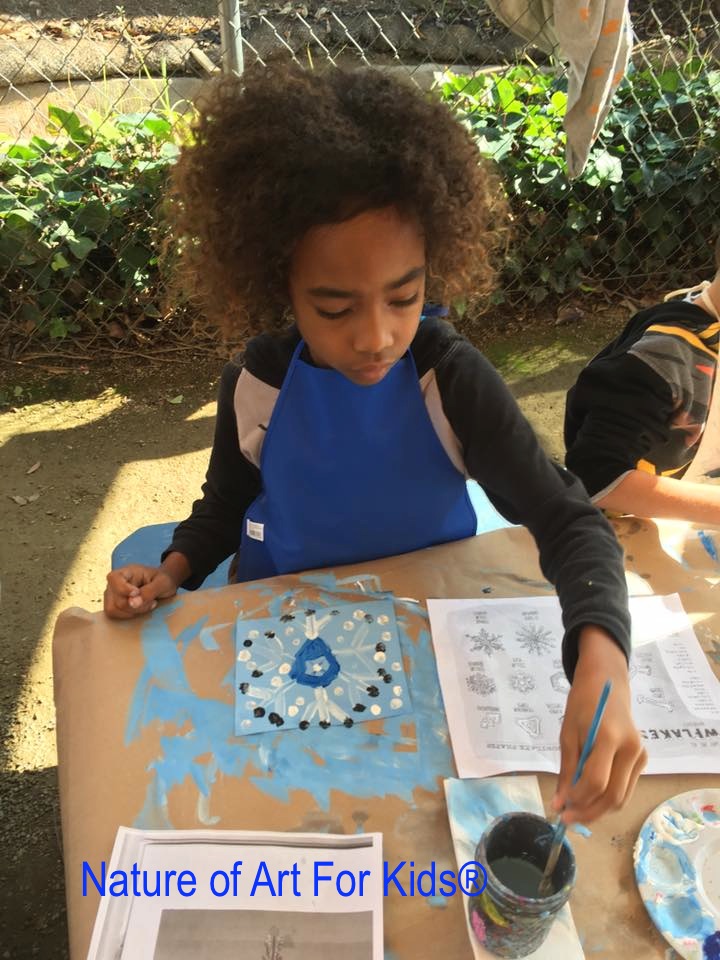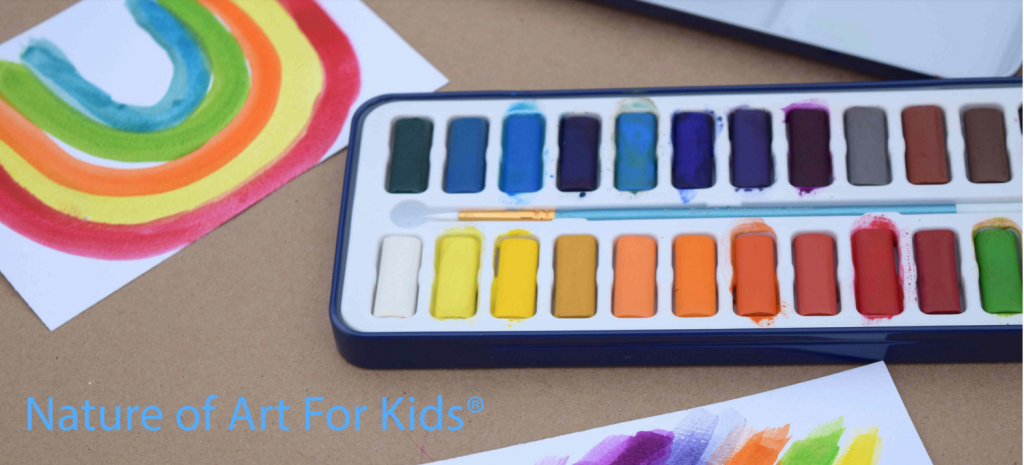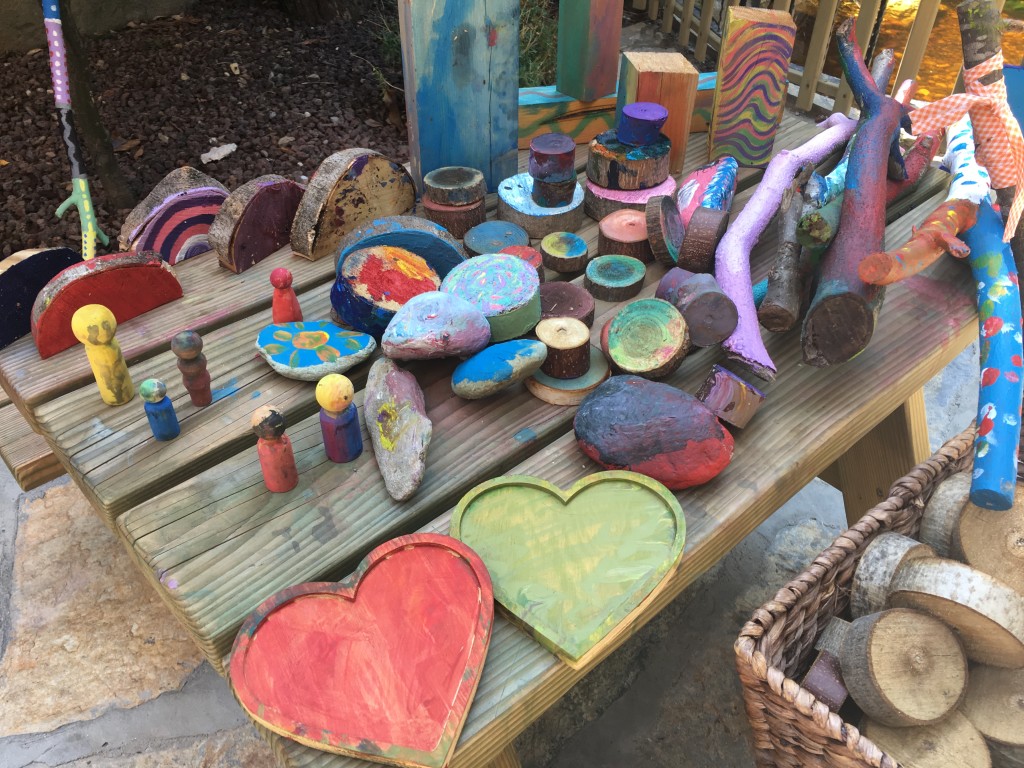Hello, I’m Spramani Elaun,
I’ve painted with well over tens of thousands of children from toddler to teen.
I’m an art teacher based out of San Diego, but I travel internationally teaching visual arts.
In this blog I’m going to give you 6 Basics how to paint with kids.
If you’ve never painted before it might seem scary, messy and hard because you might think you have to teach Van Gogh ninja techniques.
Well guess what…you don’t even need to know how to paint yourself for kids to have loads of fun painting!
Like I mentioned this is very basic, but if you find you would like to learn more, I’ve included many links to more advance blogs and demo videos.
I’m also the author of 5 art education books including “Kids Painting“, which is a wealth of resource for teaching kids how to paint.
Ok…lets dive into it how to paint with kids!
1. What should kids paint on?
There’s many different objects kids can learn to paint on.
You don’t have to start with painting on canvas.
Traditional painting lessons are taught on stretch canvas, but this can get costly for the beginner, and really not necessary.
In fact I don’t recommend beginners start on canvas, I recommend alternative surfaces to practice.
Here’s some different things to paint on: cardboard, watercolor paper, rocks, sticks, butcher or recycled papers, and even cereal boxes.
But wait to see if your child or students like painting before investing in stretch canvases.
2. What types Paints Should I Buy?
There’s a lot of paint options on the market for children.
#1 only use safe non-toxic paints designed for kids.
To choose the right paints, you have to think about the surface you plan to paint.
Basic student grade paints are; watercolor, tempera, acrylic, finger paints, dry watercolor cakes, or paints labeled craft paints.
Some are washable, some are transparent, and some archive better than others.
So decide on the surface first to determine the paints you need.
How to Pick Paints For Kid Art Projects, art teacher Spramani Elaun Safe non-toxic
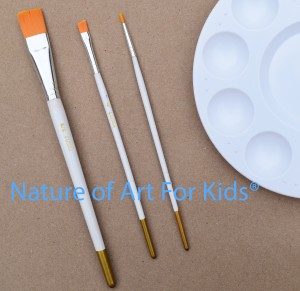
3. Painting Materials & Tools You Need
There’s a couple of materials & tools I recommend you start with:
Paintbrushes – choose the best size to cover the surface your student will work on.
Palette – to hold paints, you can buy a very inexpensive one, or use paper plates, or old dishes not in use.
Wash Jar – for cleaning paintbrushes and changing out paint colors.
Napkins or Rags – for quick clean-ups.
If you’re working in an area you don’t want paint to stain, use newsprint, plastic or paper table covers.
4. How to Maintain Messes
(My #1 Famous Art Teacher Tip)
If this is your first time out the gate, I want to recommend you start with painting a very small project.
No larger than a 5 x 5 area.
Use smaller paintbrushes, and pour very little paint into your palettes.
This is a great way to first learn the basics of handling painters tools.
This is my #1 tip teachers love learning.
It will take some time for you to manage a painting lesson, and how painters move around their tools.
Work small, and the mess will be small and manageable.
When you have several painting sessions under your belt, increase the size of the project.
I’ve taught thousands of parents and teachers round the world this trick, and I get great feedback how this was a great way to manage the mess and overwhelm the first time.
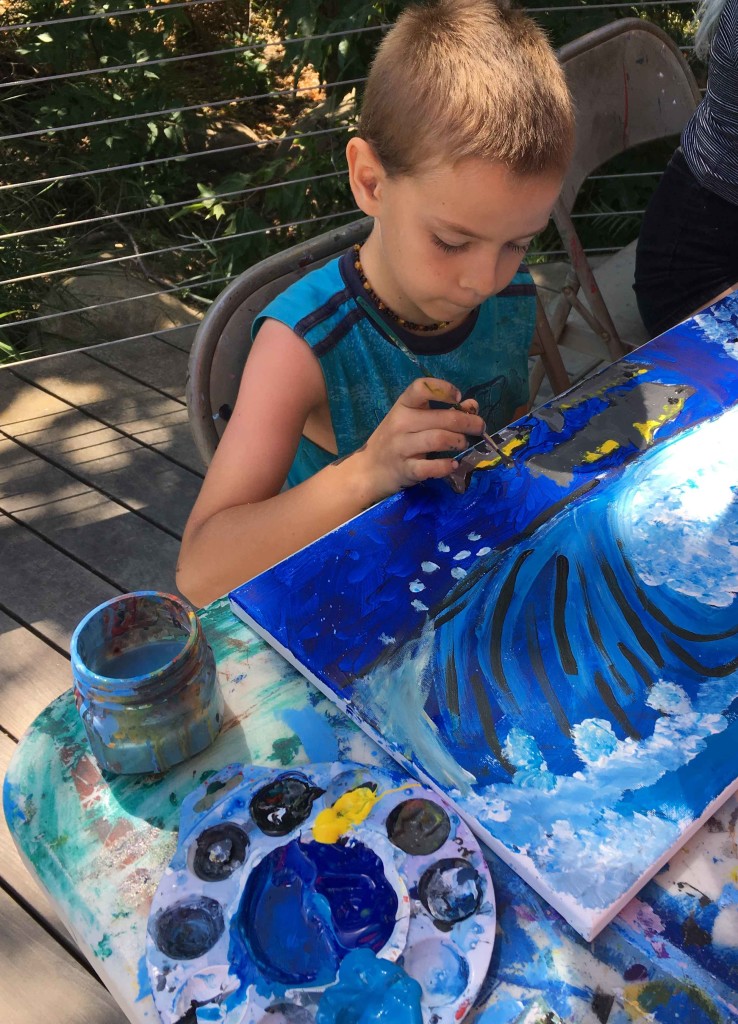
5. Best Place to Set-up a Painting Space
First painting sessions should be on a flat table surface.
Be sure child can reach all their tools from their seat without having to get up.
Maybe offer first time lessons outside where you wont worry too much about messes happening.
If indoors, set kids up for success by placing them in a worry free zone where spills will be welcomed and easy to clean-up.
6. Basic Painting Techniques To Teach Kids
Regardless if children are in preschool or elementary grades start with these basic painting skills:
Dipping a paintbrush into palette
Making brushstrokes
Re-loading a paintbrush
Mixing two colors together
Learning how to clean a paintbrush
7 Steps To Improve Kids Painting Skills
Preschool children will not be fine-motor capable from spilling or keeping colors separated in the palettes.
It’s OK if children can’t learn these basics.
You want to let kids build these skills slowly by having fun playful painting sessions.
I recommend starting with one or two colors for these ages.
Elementary children can practice these automatic task because they’re much more fine-motor advanced.
Let children choose what they want to paint.
Painting realistic images takes years of practice.
Don’t expect Van Gogh Ninja moves, 🙂 have fun.
Give children plenty of opportunities to do painting exercises, practice, practice, and more practice!
If you would like to learn more about how to paint with kids, I recommend book “Kids Painting” – Teach young kids how to paint, materials & set-up guide.
How to teach children to paint, first time lessons
A Short Cut Just for You
If you’d like to learn more about all getting kids painting, read my book, Kids Painting.
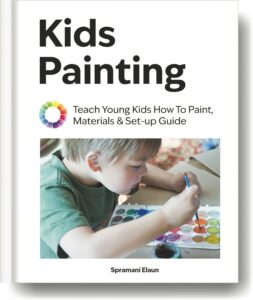
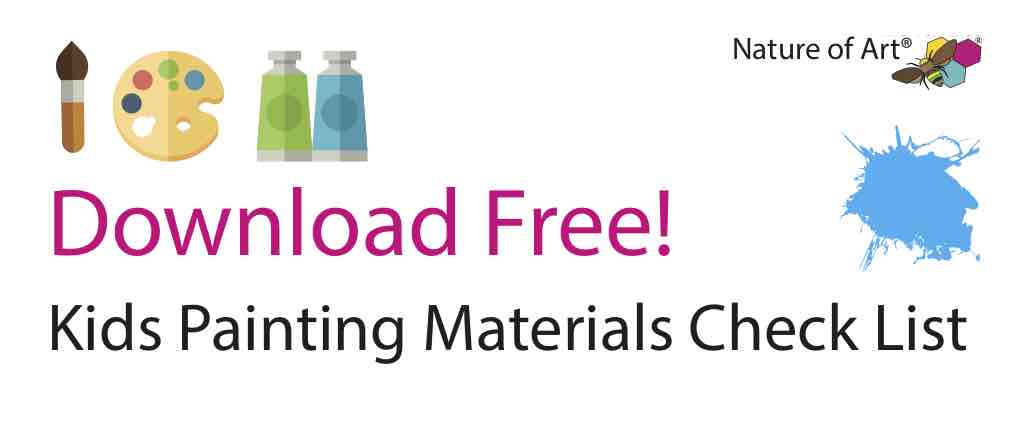
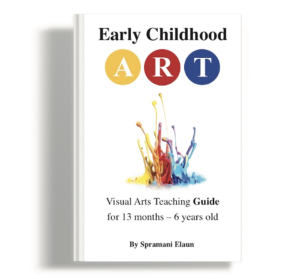
All rights reserved © 2025, Nature of Art®

No part of this blog may be used or be reproduced in any manner whatsoever including reproducing, publishing, performing, and making any adaptions of the work – including translation into another foreign language without written permission except in the case of brief quotations embodied in critical articles and reviews. Nature of Art® Publishing P.O. Box 443 Solana Beach, California 92075.
